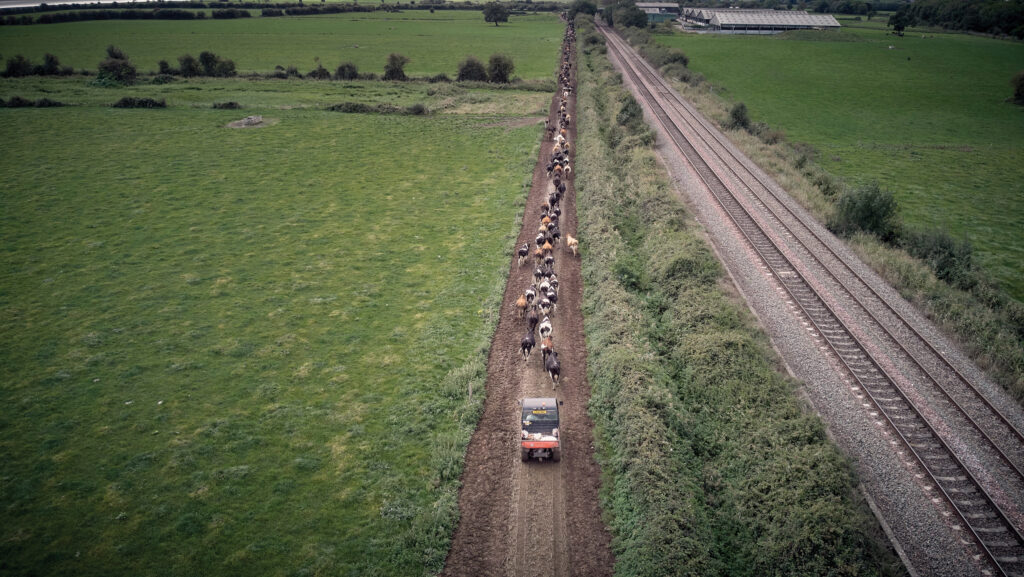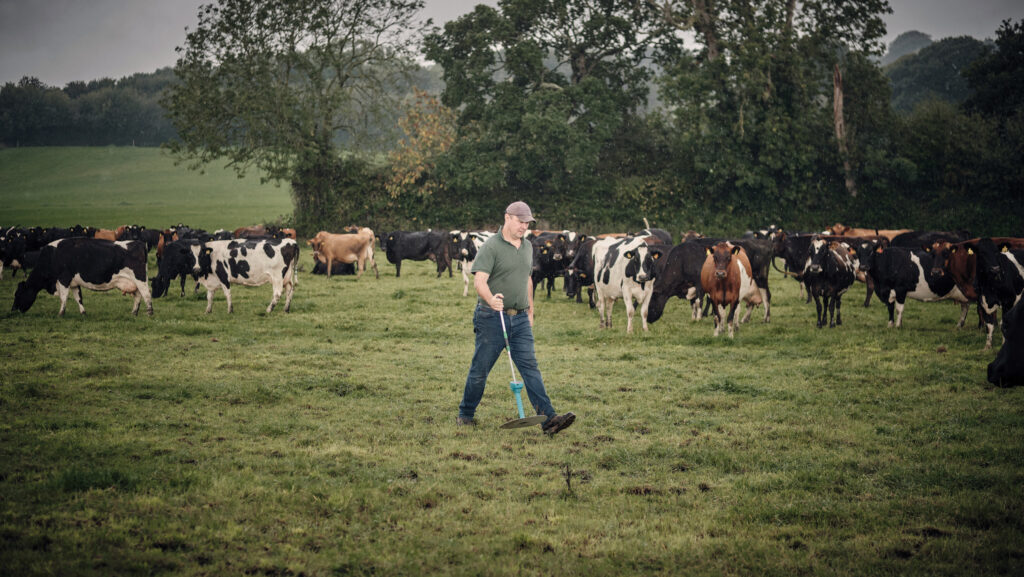How a dairy is using grass data to identify paddocks for reseeding
 © Matt Brodie
© Matt Brodie Analysing data from grass growth measurements to select the poorest yielding paddocks for reseeding in August will help Lydney Park Farm improve output across the whole grazing platform.
The goal for the Gloucestershire dairy is to raise grass yields from the worst 15% of paddocks up to the platform average, rather than try to make them equal to the best ones, says dairy manager Keith Davis.
“Our worst paddocks will probably never be the best-performing paddocks; they are not going up to 18t DM/ha [dry matter] yields,” he says.
See also: How to maximise your farm’s spring or autumn reseed
“Similarly, we won’t get the top fields higher. But we can close the gap between the lowest yield and the platform average – and get the best paddocks back to their potential.”
Farm facts: Lydney Park Farm, Gloucestershire AHDB strategic dairy farm
- 850 Jersey-crosses
- Yield 4,750 litres at 5.30% fat and 3.93% protein
- Spring block calving
- 300ha milking platform (dry cows are housed; heifers graze a separate platform)
- 51 paddocks (about 6ha each)
- Soils: heavy river silt
- 2m above sea level – beside the River Severn and protected by a flood barrier
- Rainfall of 1,081mm
- Flat topography
- Railway line splits the platform in half
Payback
He reckons that a reseeding programme will pay for itself in two years. “If grass is worth £50/t of dry matter and we can grow another 4t DM/ha in a paddock, that’s £200/ha more feed.
“It costs about £400/ha for establishment, if we are not ploughing or power harrowing, and the leys will be down for 10 years, so it is a cost-effective thing to do,” he explains.
Lydney Park originally converted its arable land to grass leys when it changed from fully housed milk production to block calving and rotational grazing.
The aim was to cut costs and make profit. New leys were drilled across 121ha (300 acres), and more added as cow numbers increased, says Keith.
Grass has been plate metered since 2007 and the data entered into Agrinet software since 2011.
He explains that they use the software to turn the farm’s 35-41 measurements of grass growth each year into a total tonnage for every paddock (including grass taken as silage).
Agrinet’s “best paddocks” function can then rank the best and worst paddocks on yield.
“All fields were in grass by 2015, but there was no reseeding policy, as we always had new reseeds to graze.
“Our original leys were only eight years old, and our average grass yield was climbing steadily, peaking in 2017 at 16.2t DM/ha,” he adds. (See “Lydney Park Farm grass yields”).

© Matt Brodie
Yield losses
However, the best paddocks have lost almost 3t/ha in yield since that peak, while the worst paddocks have dropped 4t/ha. Average yield crashed in 2018’s drought year and Keith says it has struggled to pick up ever since, despite some good growing conditions.
This loss is something the Lydney team wants to regain and, as one of AHDB’s strategic dairy farms, has been working with Teagasc’s principal research officer, Brendan Horan.
To work towards retaining 40% of the farm’s revenue as profit, Brendan cited reseeding underproductive swards as one way to increase the farm’s pasture production capability, and save on feed costs.
His point, says Keith, was that while grass yields are still above national average (AHDB figures range from 8t to 11t DM/ha) the farm is producing much less than its capacity.
“We thought that although our grass yields were sliding down, they were still good, and reseeding didn’t seem worthwhile.
“Brendan told us our potential is phenomenal, we are just not doing it – the original 121ha are tired out,” he says.
Keith acknowledges that an average yield across 51 individual paddocks can cover an extreme range of production, according to field characteristics.
Some of the farm, for instance, is ridge and furrow. This land stays wet at the bottom and dries out on the top, where cows walk.
Lydney Park Farm grass yields |
|||
|
Year |
Best paddock in t/ha dry matter |
Platform average |
Worst paddock |
|
2011 |
16.4 |
14 |
11.1 |
|
2016 |
18 |
14.8 |
12.7 |
|
2017 |
18 |
16.2 |
14.9 |
|
2018 |
15.6 |
13.6 |
10.7 |
|
2023 |
15.4 |
13.1 |
10.6 |
|
Source: Keith Davis |
|||
Causes of yield loss
Falling yields, however, could be caused by flooding and drought during the year, with grass regularly lying under water for a week in December and January.
“Grass can cope in winter when not grazed, but when actively growing in spring, three to four days of standing water kills it,” Keith says.
Other factors affecting grass growth that are being considered include soil pH, phosphorus and potassium indexes and soil compaction, he adds.
Nitrogen applications were cut by 50kg/ha from 200kg to 150kg last year, but this did not impact yield.
However, Keith thinks that trying to pick out individual paddocks for rejuvenation would be difficult without grass growth data.
Some fields in need of a reseed are obvious because they are weedy or contain grass species other than ryegrass. But with a lot of ryegrass-only swards, “every field looks similar”.
The plan is now to choose the poorest 15% of paddocks to reseed each year. Then, once the whole platform has been reseeded, the rate will drop to 10%.
“We will choose them in August, graze them tight, then take them out of the rotation, and burn off with Roundup,” he says.

Pawel Wegelewski © Matt Brodie
Reseeding method
“After aeration, we will direct drill and hope to graze the reseed at least once before we close the platform in November for winter. We’ll use cows to quickly graze [the] cover between morning and afternoon milking.”
Having analysed farm data to select paddocks, equal attention will be given to selecting a seed mix, he points out.
Estate manager Gavin Green uses the Recommended Grass and Clover List to identify grasses and clovers and requests a bespoke mix from the local merchant.
“He looks for late-heading perennial ryegrasses – for grazing only – and clover; we are also adding plantain,” says Keith.
